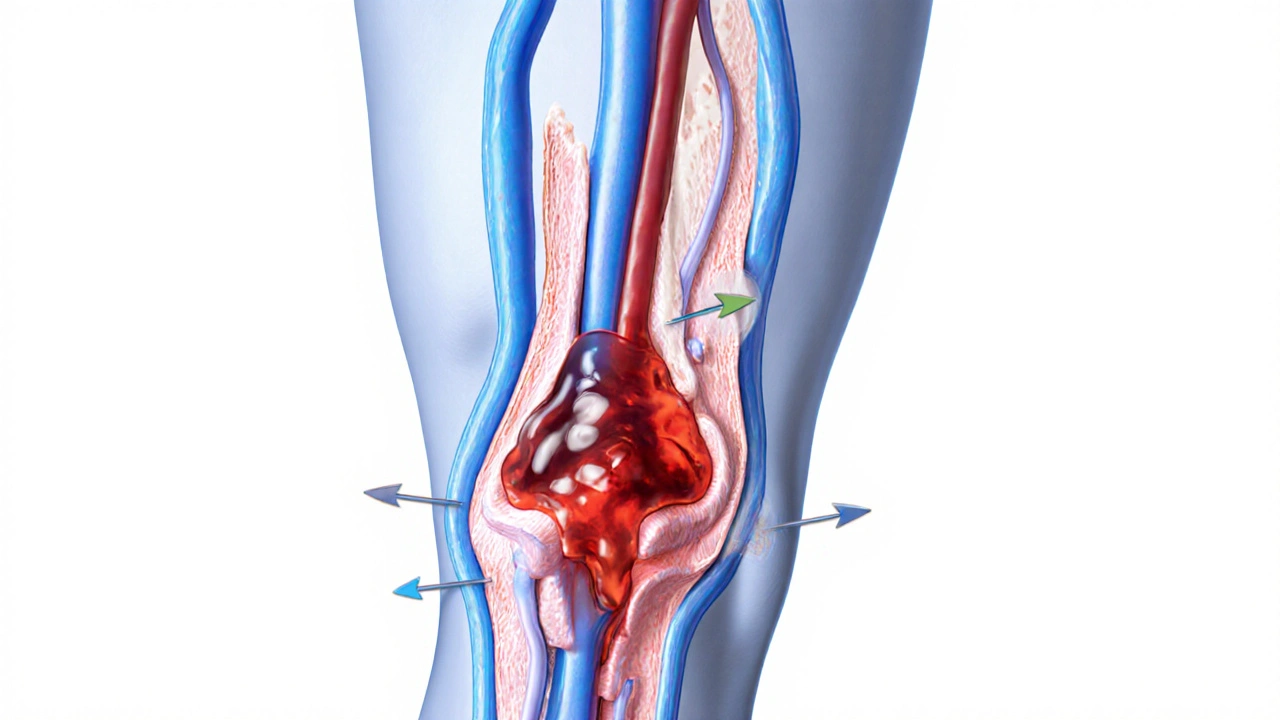DVT Risk Factors: What Increases Your Chances of Deep Vein Thrombosis
When you hear deep vein thrombosis, a blood clot that forms in a deep vein, usually in the leg. Also known as DVT, it can turn deadly if the clot breaks loose and travels to the lungs. This isn’t rare—over 900,000 people in the U.S. get DVT each year, and many don’t even know they have it until it’s too late. The good news? You can lower your risk if you know what to watch for.
Some risk factors are obvious: if you’ve been stuck in bed after surgery, sat on a long flight, or had a leg injury, your blood flow slows down and clots can form. But others are sneakier. Being over 60, carrying extra weight, or having a family history of blood clots raises your odds. Even certain medications—like birth control pills or hormone therapy—can make your blood more likely to clot. If you’ve had cancer, are undergoing chemo, or have a clotting disorder like Factor V Leiden, your body’s natural balance is already off. And don’t ignore pregnancy or recent childbirth—those hormonal shifts and pressure on pelvic veins are real triggers.
It’s not just about what’s inside you—it’s about what you do. Sitting for hours at a desk, wearing tight clothes that squeeze your legs, or smoking all add up. Even dehydration plays a role. The body needs water to keep blood flowing smoothly. If you’ve had a previous DVT, your chances of another one jump dramatically. And here’s something most people don’t realize: venous thromboembolism, the term that includes both DVT and its dangerous cousin, pulmonary embolism—is often the result of multiple small risks piling up, not one big event.
What you’ll find below are real, practical posts that break down how these risks show up in daily life. You’ll see how blood thinners interact with common supplements like turmeric, why certain blood pressure meds matter for circulation, and how conditions like rheumatoid arthritis or hormonal shifts can quietly raise your clot risk. These aren’t theoretical guides—they’re written for people who’ve been told they’re at risk and want to understand what comes next. No fluff. Just clear connections between what you’re doing, what’s happening in your body, and how to protect yourself.
- Archer Pennington
- 11
Deep Vein Thrombosis: Key Risk Factors & Proven Prevention Strategies
Learn what Deep Vein Thrombosis is, its key risk factors, and practical prevention steps-from movement and compression stockings to anticoagulant therapy-for a safer, healthier life.
Read more
